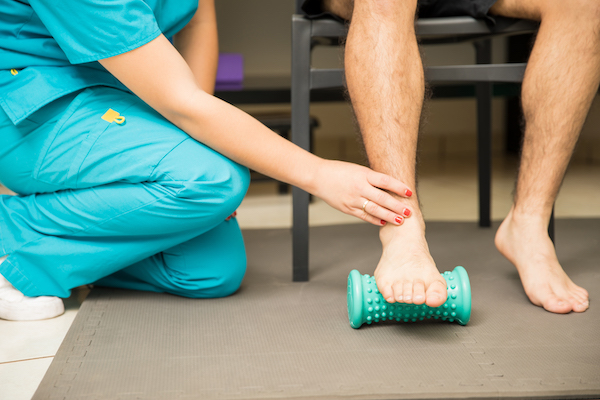courtesy of beachbodyondemand.com
What's Behind That Nagging Heel Pain?
If you've been experiencing a sharp, persistent pain in your heel, you might be suffering from plantar fasciitis. This common condition affects roughly one million Americans annually, particularly those who lead an active lifestyle, like runners. Plantar fasciitis is essentially an inflammation of the plantar fascia, a tough band of tissue that runs along the bottom of your foot, connecting your heel bone to your toes. Symptoms can range from sharp pain in the heel to swelling and discomfort in the arch of the foot.
The Root Causes of Plantar Fasciitis
Several factors can contribute to the development of plantar fasciitis, including unsupported or flat feet, excessive pronation or supination (inward or outward rolling of the foot), limited ankle dorsiflexion, low activity levels, and prolonged periods of standing. These conditions can lead to micro-tears in the plantar fascia, resulting in inflammation and pain.
Effective Strategies for Treating Plantar Fasciitis
Dealing with plantar fasciitis involves a combination of rest, targeted exercises, and sometimes medical intervention. Here are some effective strategies to alleviate the pain and heal the inflammation:
1. Professional Assessment
Seeking a diagnosis from a specialist is the first step. A physical therapist can then evaluate your gait, posture, and movement to identify any imbalances that may be contributing to the problem.
2. Stretching and Flexibility
Performing calf stretches can help improve the flexibility of the muscles around your ankle, reducing the tension on the plantar fascia. Simple exercises like the standing wall calf stretch are recommended.
3. Strengthening Exercises
Building strength in the fascia and surrounding muscles can help them better handle the stresses of activities like running. Calf raises, for instance, have been shown to be particularly effective.
4. Supportive Footwear
Wearing shoes with adequate cushioning and support can alleviate pressure on the plantar fascia. Gel heel cushions, arch supports, and orthotics are also useful tools for managing pain.

courtesy of beachbodyondemand.com
5. Alternative Treatments
While the efficacy of treatments like acupuncture and hydrocortisone injections can vary, they may offer relief for some individuals. It's important to weigh the potential benefits against the risks, especially with repeated injections.
Plantar fasciitis, while painful, is a treatable condition. With the right approach, including rest, exercises, and possibly medical treatment, you can get back on your feet without discomfort. Remember, if you're experiencing persistent heel pain, it's crucial to consult with a healthcare professional for an accurate diagnosis and tailored treatment plan.
*** Help us by endorsing our sponsor *** |
| [TAG2]
Image Credit: Patricia Marple / AuthorsUSA.com |
Did you miss our previous article...
https://naturesmart.us/fitness/unlock-the-power-of-natures-sweetest-bounty-the-18-healthiest-fruits-for-optimal-nutrition
 HealthWellnessFitnessBeautyVideosPrivacy PolicyTerms And Conditions
HealthWellnessFitnessBeautyVideosPrivacy PolicyTerms And Conditions
